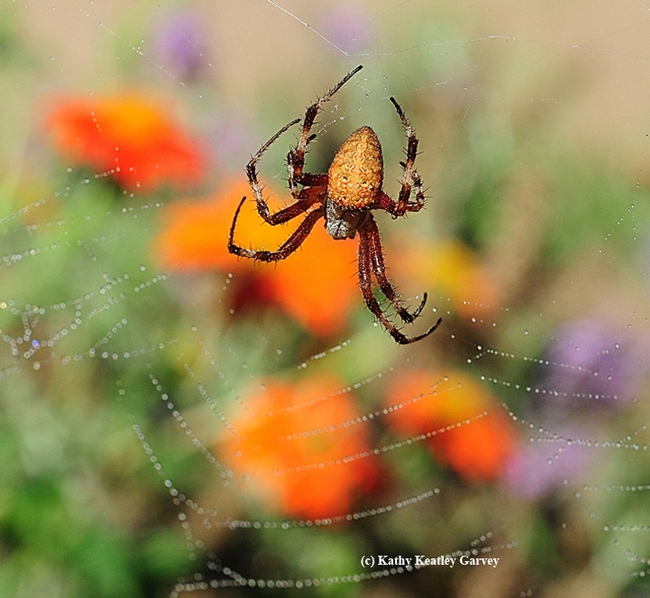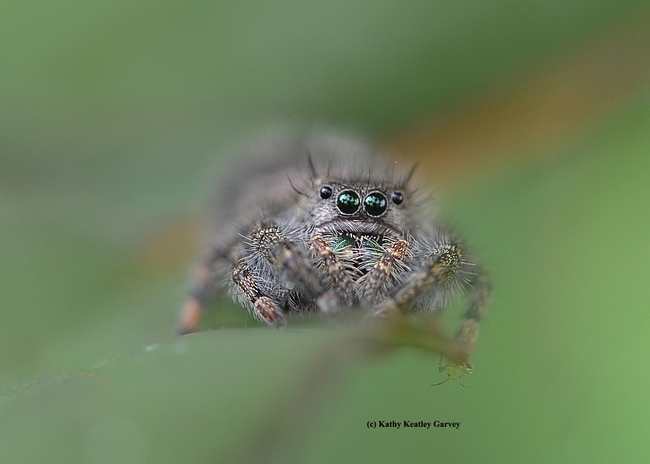
I did not save a spider today. I did not save one yesterday, either. Or the day before.
That's because I did not see any that needed saving. I frequently see them in our pollinator garden, however, and I always stop to take their image.
Nationaltoday.com tells us: "Save a Spider Day is celebrated on March 14 annually in the U.S. in part to reduce arachnophobia, a fear of spiders, and to conserve spiders. People are usually afraid of spiders, mostly due to their bites which are considered deadly. Although most of the fear is largely unfounded and exaggerated, spiders are incredibly useful to humans as they work as effective pest control among other things. On this day, we look at the many reasons why we should rather trap a spider in a jar and take it outside than kill it. Let us spin webs about spiders and why they should be saved." (See more.)
Did you know that arachnologist Jason Bond of UC Davis is the president-elect of the American Arachnological Society? Professor Bond is the Evert and Marion Schlinger Endowed Chair in Insect Systematics, UC Davis Department of Entomology and Nematology; associate dean of the UC Davis College of Agricultural and Environmental Sciences; and the newly announced director of the Bohart Museum of Entomology, succeeding UC Davis distinguished professor emerita Lynn Kimsey.
I remember asking Professor Bond to provide five good reasons why we should love spiders. (He didn't need to convince me!)
He listed these reasons:
- Spiders consume 400-800 million tons of prey, mostly insects, each year. Humans consume somewhere around 400 million tons of meat and fish each year.
- Spider silk is one of the strongest naturally occurring materials. Spider silk is stronger than steel, stronger and more stretchy than Kevlar; a pencil thick strand of spider silk could be used to stop a Boeing 747 in flight.
- Some spiders are incredibly fast – able to run up to 70 body lengths per second (10X faster than Usain Bolt).
- Although nearly all 47,000-plus spider species have venom used to kill their insect prey, very few actually have venom that is harmful to humans.
- Some spiders are really good parents--wolf spider moms carry their young on their backs until they are ready to strike out on their own; female trapdoor spiders keep their broods safe inside their burrows often longer than one year, and some female jumping spiders even nurse their spiderlings with a protein rich substance comparable to milk.
Another good reason is that spiders are...well...beautiful. Check out this gorgeous redfemured spotted orbweaver, Neoscona domiciliorum, or this eye-popping jumping spider from our pollinator garden. It's their garden, too, and I am just a visitor in their habitat.
Attached Images:

